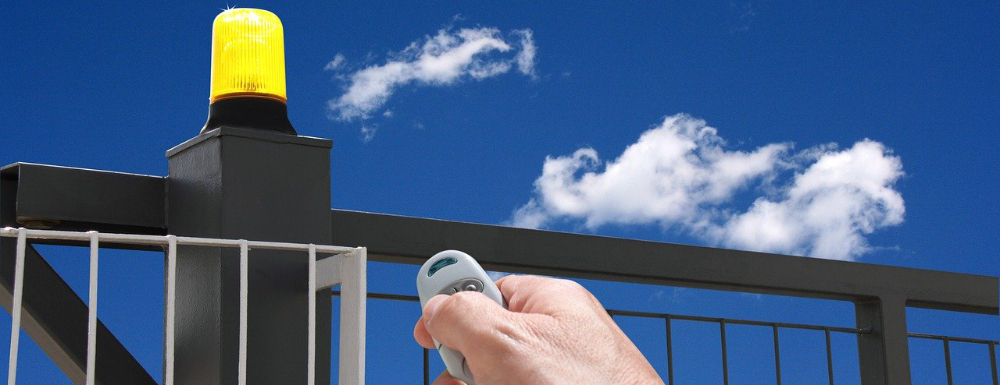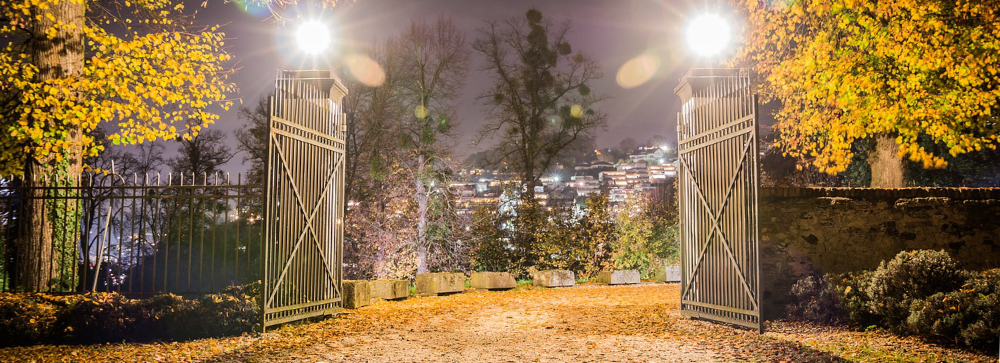Automated gates
Contents |
[edit] What are automated gates?
Automated gates, automatic gates or autogates (US term), are electrically powered gates that can be opened and closed from a distance. They are usually activated via a wired switch in the property or a remote control and often part of an automated entry and security system, with a fob or key code activated electric lock.
Today such electric gates (UK term) are common features of many buildings, from individual houses to hotels, retirement homes, as well as commercial, education and public buildings, acting as entry control systems to the grounds of these properties.
[edit] Component parts
The components of an automatic gate are likely to include a power supply, a gate motor and opening mechanism, a control board along with remote control or keypad and sensors, they should also include an emergency release system in case of emergency.
[edit] Classification, standardisation and certification
Automated gates are classified as machines under the EU Machinery Directive and in the UK, The Supply of Machinery (Safety) Regulations, brings the European Machinery Directive (currently 2006/42/EC) into UK criminal law. In the UK automated gates are also covered by the Loss Prevention Standards (LPS) which are overseen by the Loss Prevention Certification Board (LPCB) and cover the performance of security and fire safety products and services.
LPS 1175 Issue 8 standard was introduced to evaluate the resistance of physical security products such as windows, doors, fences, and gates, including automated gates. The standard also aims explain to, and assure, buyers, of, the different levels of strength in terms of resistance to manual forced entry, as is demonstrated, tested and evidenced.
Many of these types of products may also be voluntarily Secured By Design (SBD) certified. The Secured by Design membership scheme includes member companies whose products have been awarded the 'Police Preferred Specification' status. Products with the logo and title indicates that the company or product meet high standards set by Secured by Design, use is restricted exclusively to those that have successfully tested to Secured by Design requirements. Here is the current list Member Company Product Categories from Secured By Design.
Sold Secure is another certification system, Master Locksmiths Association and also recognised by Secured By Design, they offer a range of specifications, which includes SS323 Fences/Gates. Approval under this system is classified into 3 main categories; Bronze, Silver & Gold (with an addition of Diamond for certain product types). The categories reflect the amount of time allocated per test and the type of tools used, which can vary depending on what test is specified.
[edit] Example types of automated gates
There are many different types of standard gates, in terms of design, materials, uses as well as opening systems, most of these variations of standard manual gates can also be automated. Some examples are given below:
- Single parting sliding gates: have a single wheel-mounted gate that slides along a track to one side.
- Bi-parting sliding gates: have a two wheel-mounted gates that slide along a track to either side of the entrance.
- Single swing gates: have one leaf that can open in either direction, usually with an articulated arm.
- Double swing gates: have two leaves that can open in either direction, usually with an articulated arm.
- Hinged single gates: have one leaf that can open in one direction, usually with an articulated arm.
- Hinged double gates: have two leaves that can open in one direction, usually with an articulated arm.
- Bi-fold gates: have one or two leaves with a hinge in the centre to fold in half.
- Cantilever gates: Are similar to sliding, but the gate cantilevers across the opening.
- Telescopic sliding gates: Similar to sliding, but split in two or three layered leaves.
[edit] Related articles on Designing Buildings
- Access control.
- CCTV.
- Commercial security systems.
- Digital door lock market.
- ECA articles.
- Electric motor.
- Electrical energy.
- Electrical power.
- Electric lock.
- Entry control.
- Fence.
- Gate.
- Home security solutions market.
- How door locks work.
- Kissing gate.
- Modal filter.
- Outbuildings security.
- Perimeter security.
- Proximity access control system.
- Security and the built environment.
- Security glazing.
- Types of alarm.
- Types of barrier.
- Types of door.
- Types of lock.
- Visitor door entry system.
Featured articles and news
RTPI leader to become new CIOB Chief Executive Officer
Dr Victoria Hills MRTPI, FICE to take over after Caroline Gumble’s departure.
Social and affordable housing, a long term plan for delivery
The “Delivering a Decade of Renewal for Social and Affordable Housing” strategy sets out future path.
A change to adoptive architecture
Effects of global weather warming on architectural detailing, material choice and human interaction.
The proposed publicly owned and backed subsidiary of Homes England, to facilitate new homes.
How big is the problem and what can we do to mitigate the effects?
Overheating guidance and tools for building designers
A number of cool guides to help with the heat.
The UK's Modern Industrial Strategy: A 10 year plan
Previous consultation criticism, current key elements and general support with some persisting reservations.
Building Safety Regulator reforms
New roles, new staff and a new fast track service pave the way for a single construction regulator.
Architectural Technologist CPDs and Communications
CIAT CPD… and how you can do it!
Cooling centres and cool spaces
Managing extreme heat in cities by directing the public to places for heat stress relief and water sources.
Winter gardens: A brief history and warm variations
Extending the season with glass in different forms and terms.
Restoring Great Yarmouth's Winter Gardens
Transforming one of the least sustainable constructions imaginable.
Construction Skills Mission Board launch sector drive
Newly formed government and industry collaboration set strategy for recruiting an additional 100,000 construction workers a year.
New Architects Code comes into effect in September 2025
ARB Architects Code of Conduct and Practice available with ongoing consultation regarding guidance.
Welsh Skills Body (Medr) launches ambitious plan
The new skills body brings together funding and regulation of tertiary education and research for the devolved nation.
Paul Gandy FCIOB announced as next CIOB President
Former Tilbury Douglas CEO takes helm.
UK Infrastructure: A 10 Year Strategy. In brief with reactions
With the National Infrastructure and Service Transformation Authority (NISTA).
























